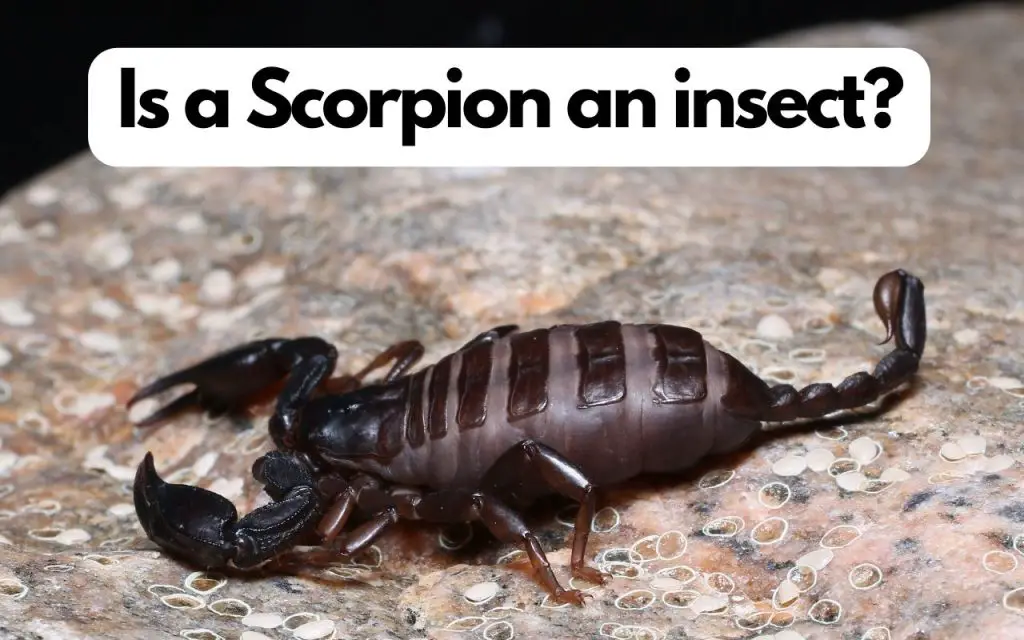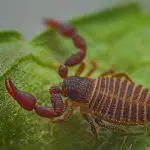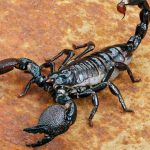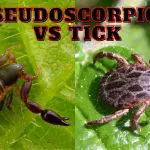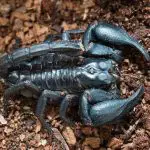As an arachnid enthusiast, I find the world of scorpions to be both fascinating and misunderstood. One common question that always seems to pop up is, “Is a scorpion an insect?” Today, I aim to clarify this, and much more about these captivating creatures.
A scorpion is not an insect, it is a member of a distinct order of arachnids called the Scorpiones. Like insects and crustaceans, scorpions are arthropods, and share a number of features with them. That said, they also show some key anatomical differences. Keep reading to learn more about how we can tell that scorpions, insects, and crabs are different animals.
Is a Scorpion a Reptile or an Insect?
When you think about scorpions, you might envision them as tiny, desert-dwelling reptiles or group them with the myriad of creepy-crawlies in the insect world. But surprisingly, they are neither. Scorpions are not reptiles, and they certainly are not insects.
Reptiles, such as snakes and lizards, are vertebrates characterized by scales, cold-bloodedness, and egg-laying tendencies. Insects, on the other hand, belong to the group known as hexapods. They have six legs, three body segments – the head, thorax, and abdomen – and most have wings at some stage of their life. Scorpions possess none of these characteristics.
Is a Scorpion a Crustacean?
While the crustacean idea might sound unusual, it’s an understandable assumption given that both scorpions and crustaceans are arthropods. However, while crustaceans like crabs and lobsters inhabit aquatic environments and have hard exoskeletons, they differ significantly in their physical structures and life processes. Scorpions are not crustaceans.
Now, don’t feel silly if you thought there was an uncanny resemblance between crustaceans and scorpions. They are in fact related, albeit distantly.
Arachnids, Crustaceans, Horseshoe Crabs, and Sea Spiders form the Chelicerata subphylum. This subphylum is a major division of the arthropoda phylum.
I know I’m taking a while getting to the point, but all members of the chelicerata subphylum have similar mouthparts called chelicerae. That’s why the mouthparts and face of a crab look very similar to those of a scorpion.
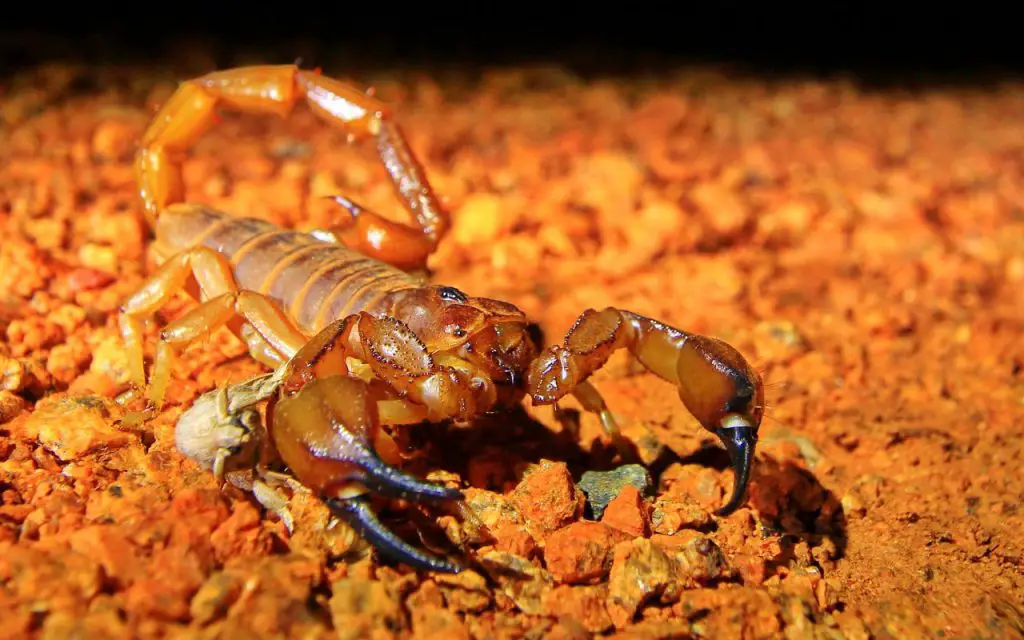
What is a Scorpion Classified As?
Scorpions belong to the Arachnida class, which also includes spiders, mites, and ticks. They are a part of the Scorpiones order, characterized by eight legs, a pair of pincers, and a segmented tail tipped with a venomous stinger. Their unique features set them apart from insects, reptiles, and crustaceans.
How Many Legs Does a Scorpion Have?
One of the key features that identify scorpions as arachnids is their number of legs. Like all arachnids, scorpions have four pairs of legs, totalling eight. It’s one of the features that differentiates them from insects, which have six legs.
Are Scorpions Poisonous?
A common misconception is that all scorpions are deadly. While it is true that scorpions possess venom, only about 25 out of over 1,500 known species pose a risk to humans. However, a sting from even a non-dangerous scorpion can be painful, similar to a wasp or bee sting.
Scorpion Scientific Name
The term ‘scorpion’ is derived from the scientific Order name ‘Scorpiones’. This order encompasses more than 1,500 different species, each with its own unique scientific name. For example, the scientific name for the deadly Deathstalker Scorpion is ‘Leiurus quinquestriatus’.
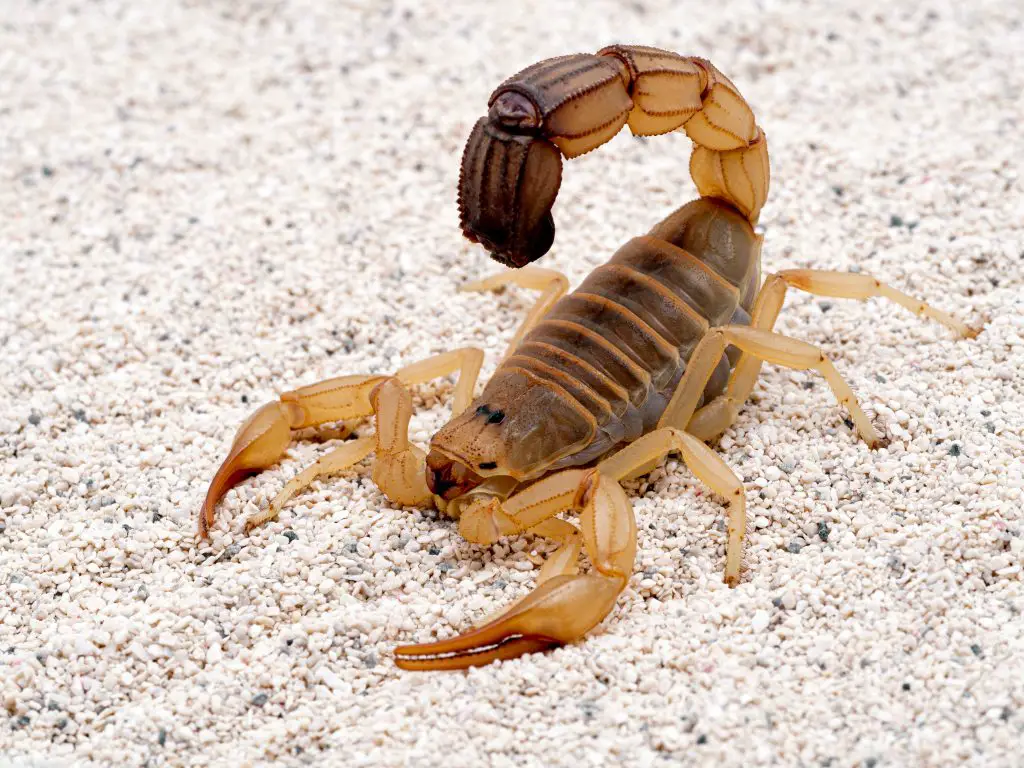
Scorpion Family
The world of scorpions is quite diverse, spanning numerous families. Some of the prominent families include Buthidae (the largest family, which includes the Deathstalker Scorpion), Scorpionidae, and Diplocentridae, each with unique traits and distribution across the globe.
Where Do Scorpions Live?
Scorpions are incredibly versatile, found on every continent except Antarctica. They are commonly associated with arid desert regions such as central Australia, but they also inhabit grasslands, savannas, deciduous forests, mountain habitats, and even the Brazilian rainforests. Below is a table showing the most common types of scorpions and their habitats.
| Scorpion species | Geographical distribution |
|---|---|
| Deathstalker | Middle East and North Africa |
| Emperor Scorpion | West African Rainforests |
| Arizona Bark Scorpion | Southwestern United States |
| Indian Red Scorpion | India, Pakistan, Nepal, and Sri Lanka |
Key Anatomical Features of Scorpions
Scorpions have fascinating anatomical features that equip them perfectly for survival in their respective habitats. Some of these include:
- Chelicerae: These are the scorpion’s mouthparts used for feeding.
- Pedipalps: These large, claw-like structures are used for defense, prey capture, and sensory perception.
- Carapace: The scorpion’s exoskeleton, providing protection and support.
- Metasoma: The scorpion’s tail, which ends in a venomous stinger.
- Pectines: Comb-like sensory organs used to detect vibrations and analyze the terrain.
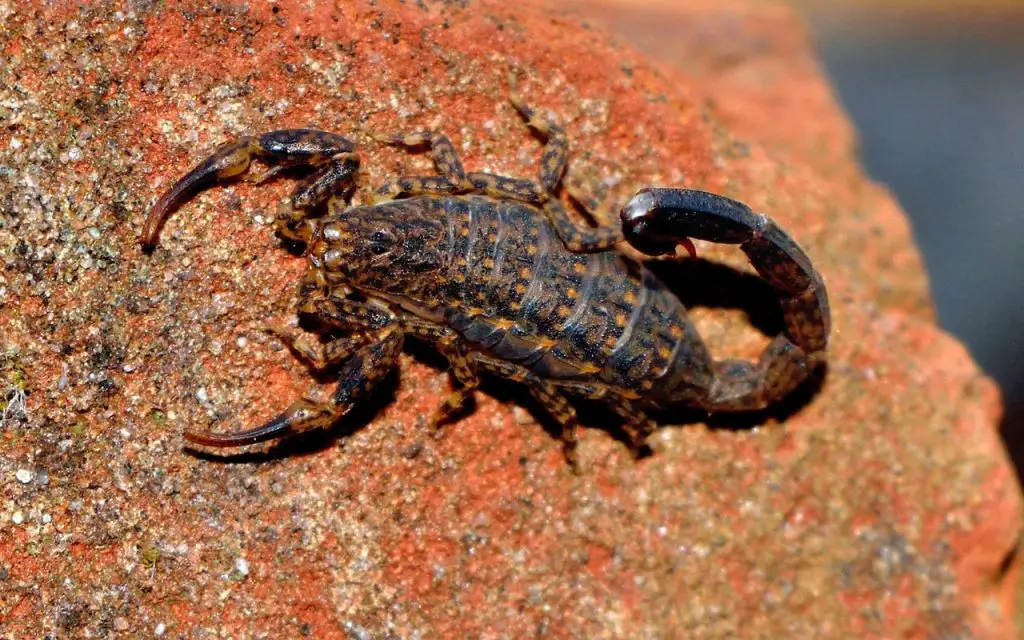
How Scorpions Are Different From Other Arachnids
Scorpions are unique even among arachnids. Unlike spiders, they give birth to live young and carry them on their backs until their first molt. Scorpions also possess an impressive ability to slow their metabolism, allowing them to survive extreme conditions and go up to a year without food.
Moreover, scorpions are the only arachnids with a venomous stinger, which they use for both hunting and defense. They also have a unique courtship dance, where the male and female grasp each other’s pedipalps and perform a “dance” before mating.
Is a Scorpion an insect? Conclusion…
So, to answer the initial question, “Is a scorpion an insect?” No, it’s not. Scorpions, with their eight legs, venomous stingers, and unique life processes, belong to the arachnida class, setting them apart from insects, reptiles, and crustaceans.
Studying scorpions has revealed to me just how remarkable these creatures are. Their adaptations to survive in various environments, their intriguing anatomy, and their place within the arachnid group showcase the intricate beauty of the natural world. As a hobbyist arachnid observer, I can confidently say that there is so much more to scorpions than meets the eye.

